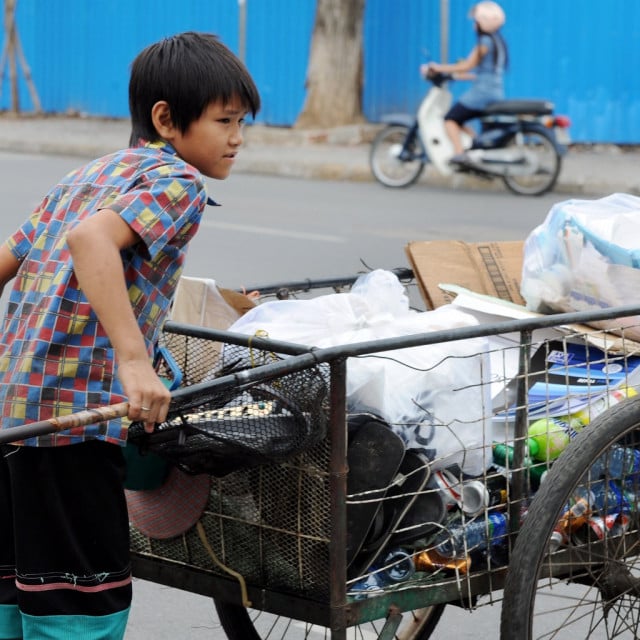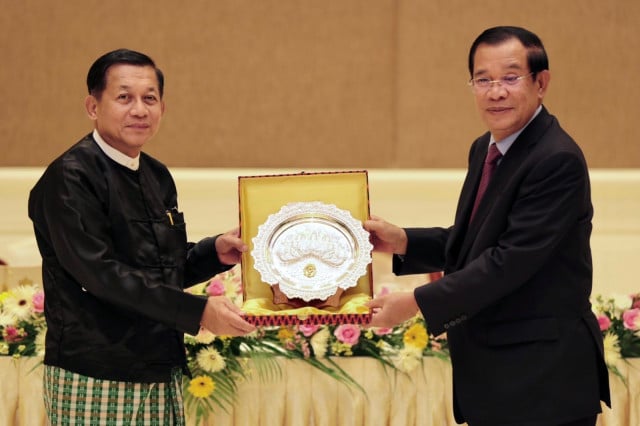Opinion: Together We Can End Child Labor

- Chihoko Asada-Miyakawa
- May 24, 2021 8:12 AM
The United Nations has declared 2021 as the International Year for the Elimination of Child Labour. Chihoko Asada-Miyakawa, ILO's Assistant Director-General and Regional Director for Asia and the Pacific explains why the time for change is now.
62 million children in the Asia Pacific region are in child labor. It is a simple sentence to write but far harder to comprehend. 62 million children. Spend a moment to think just how big that number is–roughly similar to every child aged under 14 in the Philippines, Viet Nam and Japan combined. Meanwhile, 28 million of them undertake hazardous work, risking their lives and health daily in sectors such as mining, agriculture and construction.
But behind the big numbers are individual children, each with hopes and dreams for the future.
Children like Min Min who scavenges for scraps of jade but dreams of buying his own house; Shahid collecting waste plastic bottles but longing for education; and Bhiti, toiling on sewing machine but yearning to become a doctor.
Wherever child labor takes place it has devastating consequences for a child’s education, skills acquirement and future possibilities to overcome the vicious circle of poverty, incomplete education and bad jobs.
The persistence of child labor in today’s world is unacceptable. As ILO Director-General Guy Ryder said recently, “There is no place for child labor in society. It robs children of their future and keeps families in poverty."
The good news is that at a global level over the last 20 years almost 100 million children have been removed from child labor, bringing numbers down to the current figure of 152 million worldwide.
Although numbers have fallen, the trend has slowed significantly and the COVID-19 pandemic threatens to further reverse years of progress made. With schools closed and the challenges of distance learning and economic crisis, many children may see themselves pushed into child labor to support household income.
The United Nations has declared 2021 as the International Year for the Elimination of Child Labor. New global estimates of child labor will be announced on 10 June to mark World Day Against Child Labor. We sincerely wish to see a continuation of the downward trend, despite the ongoing impact of COVID-19.
The main purpose of this year is to foster policy responses and undertake initiatives to achieve Target 8.7 of the UN Sustainable Development Goals. That is to “Take immediate and effective measures to eradicate forced labor, end modern slavery and human trafficking and secure the prohibition and elimination of the worst forms of child labor, including recruitment and use of child soldiers, and by 2025 end child labor in all its forms."
At the global launch of the International Year in January 2021, UN agencies, governments from different continents, business and civil society organizations committed to step up efforts during 2021 and to send a clear signal that the elimination of child labor is possible.
Under the slogan “Take action to end child labor”, governments and other partners are committing to action pledges that pave the road towards 2025.
From past experience, we know that in order to be successful, root causes of child labor need to be addressed, clear decisions taken and budgets mobilized. More coherent action is required, ensuring the availability of quality education, social protection for all, and decent work for parents.
Governments, businesses, civil society and other partners are encouraged to raise awareness on the importance of the eradication of child labor and to share good practices and lessons learnt – at the national, regional and global levels. A number of high-level events over the year will also provide governments, social partners and civil society with possibilities of engagement.
The work is supported by the Alliance 8.7, a global partnership to end child labor, forced labor, human trafficking and modern slavery. The Alliance is actively working with 22 “pathfinder countries”, including Nepal, Sri Lanka, Vietnam and Fiji in the Asia-Pacific region, and over 200 partner organizations to accelerate action, share knowledge and implement innovative solutions on the ground. It is important to develop these solutions together with schools, families, local authorities and organisations while also listening to the voice of children.
The International Year provides an extraordinary opportunity to bring partners together, to learn from each other and to put proven and innovative measures into practice to protect the rights of children.
There can be no one-size-fits-all solutions; responses need to be adapted to the very diverse environments in which child labor still occurs. Each and every action – whether taken by a government or an individual – helps lay the foundations for a world in which children enjoy their childhood. I encourage you to join us and to take action now. Let’s end child labor by 2025.
Chihoko Asada-Miyakawa is ILO's Assistant Director-General and Regional Director for Asia and the Pacific















